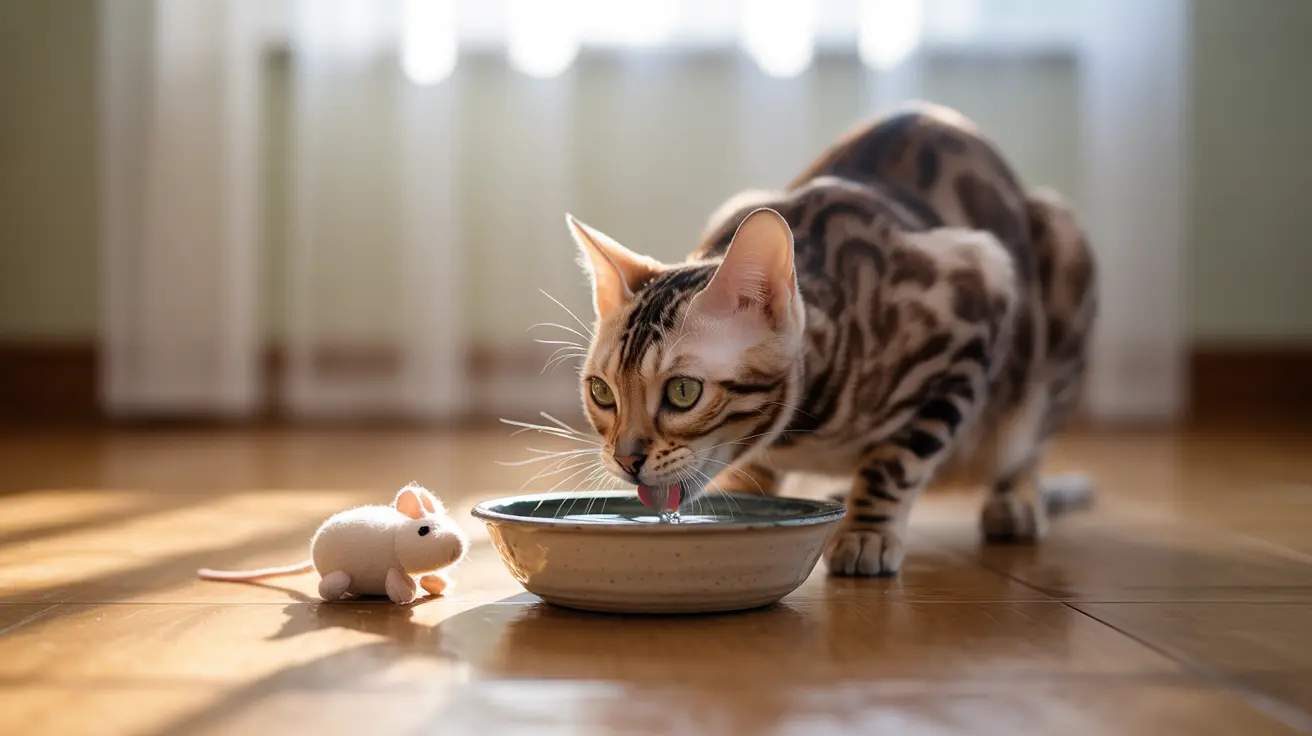Normal Water Intake vs. Excessive Drinking
A healthy cat typically drinks about 3.5-4.5 ounces of water per 5 pounds of body weight daily. However, this amount can vary significantly based on diet type, activity level, and environmental conditions. Cats eating primarily wet food naturally drink less water than those on dry food diets, as canned food contains about 70-80% moisture.
Common Harmless Reasons for Increased Thirst
Weather and Environmental Changes
Hot weather naturally increases your cat's water consumption as they try to stay cool and hydrated. This is typically normal and should return to baseline when temperatures moderate.
Diet Changes
Switching from wet to dry food will naturally cause your cat to drink more water to compensate for the reduced moisture content in their diet. This adjustment period is normal and expected.
Medical Causes for Concern
Kidney Disease
Chronic kidney disease (CKD) is one of the most common reasons for increased thirst in cats, especially seniors. When kidneys aren't functioning properly, cats drink more to help flush toxins from their system. This is often accompanied by weight loss and changes in appetite.
Diabetes
Diabetes mellitus can cause excessive thirst and urination due to high blood sugar levels. Other signs include increased appetite despite weight loss and decreased energy levels.
Other Medical Conditions
Several other conditions can cause increased thirst, including:
- Hyperthyroidism
- Urinary tract infections
- Liver disease
- Adrenal gland issues
When to Contact Your Veterinarian
Seek veterinary care if your cat's increased thirst:
- Persists for more than a few days
- Is accompanied by changes in urination patterns
- Occurs alongside other symptoms like weight loss, lethargy, or vomiting
- Results in noticeably larger clumps in the litter box
Monitoring Your Cat's Water Intake
To track your cat's water consumption:
- Mark the water level in their bowl
- Measure the amount you add each day
- Note any changes in litter box habits
- Keep a log of other symptoms or behavior changes
Frequently Asked Questions
Why is my cat suddenly drinking a lot more water than usual?
Sudden increases in water consumption can be due to hot weather, diet changes, or medical conditions like kidney disease, diabetes, or hyperthyroidism. If the change persists for more than a few days, consult your veterinarian.
How can I tell if my cat's increased thirst is a sign of kidney disease or diabetes?
Look for accompanying symptoms like weight loss, increased urination, changes in appetite, or lethargy. Only veterinary testing can definitively diagnose these conditions through blood work and urinalysis.
What is the normal amount of water my cat should drink each day?
Cats typically need about 3.5-4.5 ounces of water per 5 pounds of body weight daily. However, this varies based on diet type, activity level, and environmental conditions.
When should I be concerned about my cat's water intake and call the vet?
Contact your vet if increased thirst persists beyond a few days, or if you notice additional symptoms like weight loss, changes in appetite or urination, vomiting, or behavior changes.
How does switching from wet to dry food affect my cat's water drinking habits?
Switching from wet to dry food naturally increases water consumption because dry food contains less moisture (about 10%) compared to wet food (70-80%). This increase is normal and expected as your cat compensates for the reduced dietary moisture.
Remember, while some causes of increased thirst are harmless, others require prompt medical attention. When in doubt, it's always better to consult with your veterinarian to ensure your cat's health and well-being.






